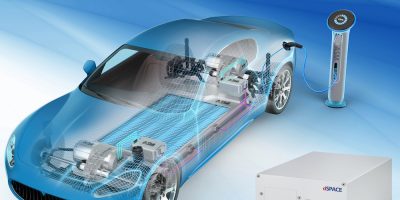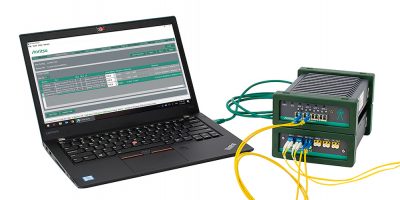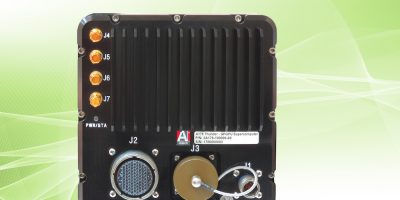The DS5366 Smart Charging Solution from dSpace offers automobile manufacturers and charging station providers developing and testing technologies for smart charging. International standards are adhered to and interoperability guaranteed, says the company. There is support for developers of onboard chargers, charging columns and, in the future, inductive charging systems.
The DS5366 Smart Charging Solution integrates existing test systems and a test depth that can be adjusted, depending on customer requirements. Extensive manipulations are possible, both at the electrical and at the protocol level. The software element of the solution contains an open model and there is a special hardware module for communication, according to ISO 15118, for an adaptation to the powerline communication.
All communication events are logged to allow for manual or automatic checks of the intended behaviour and compliance with the protocol specification. This can also be used to perform an error diagnosis to support conformance testing.
Typical applications are tests of the on-board chargers and charging stations, as well as the communication modules according to various charging standards. It can also be used in error simulation during communication. The dSpace DS5366 Smart Charging Solution enables the simulation of a variety of charging stations in the lab, emulates communication errors, and ensures that the engine control unit (ECU) functions without errors.
It will also be possible to test the compatibility between the developed charging stations and numerous simulated vehicles during tests on the charging station, dSpace adds.
For the development of on-board chargers, if no software or hardware is available for charging communication during the development of a vehicle charge controller, the DS5366 can replace the vehicle ECUs or their communication controllers for testing in-vehicle prototypes.
In combination with dSpace Automotive Simulation Models (ASM), which is the tool suite for simulating motors, vehicle dynamics, electric components, and the traffic environment, the DS5366 can be used for battery-powered electric vehicles, including real-time, high-voltage battery simulation. The models include emulation of a charging station in which the charging voltage depends on the vehicle power consumption, which is determined by the charging control unit that is tested in the vehicle. If no charge controller is available, ASM lets users simulate a controller using a constant current constant voltage (CCCV) charging process. Demo models are prepared in such a way that all signals required for communication with the control units are available to test control algorithms and the interfaces between all devices, according to CHAdeMO, ISO 15118, and GB/T 20234.2 standards.







